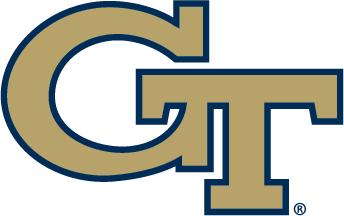Todd Stansbury believes in transparency in everything, but especially Georgia Tech athletics.
Tech’s director of athletics made that perfectly clear during his annual State of Athletics address to a group of approximately 100 donors and alumni Wednesday afternoon at the Callaway Club inside McCamish Pavilion. In fact, he’d like everybody to see everything.
That was the focal point of his No. 1 project, a brand new, state-of-the-art Edge Center, which would replace the aging headquarters for Georgia Tech athletics that currently stands at the corner of Techwood Drive and Bobby Dodd Way, adjacent to Bobby Dodd Stadium. The new Edge Center, which has a price tag of $70 million, is part of Georgia Tech’s Athletics Initiative 2020, which aims to raise $125 million by the end of 2020.
“When you look at the Edge today, you can’t even find the front door to that thing,” he said. “The way I envision what the new Edge is going to be, it’s going to be a lot of glass, you’re going to be able to walk in there and see the activity going on. I’ve got to be able to show recruits that it’s more than us just saying that we’ve got the best academic-support program in the country. They need to see it. They need to see it in action.”
The project is more than halfway funded — he estimated that $40 million of the $70 million had already been raised — and looked forward to the day fundraising would be complete.
Stansbury made it crystal clear that having a new Edge Center is imperative and cited precedent as to its potential impact. He recalled the ripple effect the opening of the current Edge Center had when it first opened.
“[In] 1981, this was state-of the-art. If you think about what happened because of that, by 1990 we had won a national championship in football, [reached a] Final Four in men’s basketball, [were on the verge of appearing in] the College World Series in baseball, David Duval was playing golf here, Stewart Cink,” he said. “That changed us. Now we’re at a time where we’re ready for the next because if we’re all about excellence and all about education, innovation, then these recruits need to see it happening,” he added. “We’re good at talking about it. [Football coach] Geoff Collins has done a phenomenal job on the recruiting trail talking about what sets us apart. But at some point you’ve got to show it. This is the next. The new Edge is really the centerpiece because it affects every student-athlete in our program, every coach and in this you’ll have a center for student-athlete leadership, a center for sports performance and a center for sports innovation. When a recruit and his or her parents come onto this campus they will see what we are all about in action.
“We just won [the ACC Game Changers Award] for Jackets Without Borders (GT athletics’ annual international service trip). I can show you a video but I can’t show you in our facility where that’s happening,” he added. “We’ve got all these industry pipelines up and running. We just had an entrepreneur meet with our College of Business students. I can’t show you where that’s happening. This building will show you where that’s happening. We’re talking about premium space. Three-hundred-and-fifty-nine days a year it’ll be offices, meeting space, study space, whatever it may be. Six days a year, it will serve as a place where we can introduce ourselves to the world, including our recruits.”
Bold plans to build were an important part of Stansbury’s speech but not the only part. There was plenty to say about what had been accomplished, not only since he took the reins on Sept. 22, 2016, but since his last State of Athletics presentation last spring.
He walked the audience through a presentation on the GTAA’s four strategic priorities — brand, revenue, culture and infrastructure.
“When I stood here the first time, I said that basically we had four strategic priorities and this was us getting started on ‘What are we going to focus on to get from where we are to where we need to be?’” he said. “I think we’ve moved from ‘What are we focusing on?’ to ‘What are the outcomes that we’re looking for?’ The outcomes that we’re looking for are recruiting and how do we build a better student-athlete once we get them. If we do those two things that’s going to equate to wins. That’s going to equate to winning. On the recruiting side, student-athletes that we want to come to Georgia Tech have options. They have a lot of options. So we’ve got to fill in the blank on, ‘Why Tech? Why Georgia Tech and not one of those other big brands that are out there?’
“How do we take that recruit, signee — Josh Okogie, who was a three-star athlete, and make him a first-round draft choice? How do we do that across the board?” he added. “This is not a one-and-done place. We never will be. Because, if in your mind you’re a one-and-done, you’re not coming to Georgia Tech. Why would you? But our three-stars that become five-stars can beat those one-and-dones if that’s the way that we do it here.”
VIDEO: 2019 State of Athletics - Todd Stansbury on strategic priorities and desired outcomes
Stansbury proudly recognized the Jackets Without Borders — a program that is his brainchild, something he modestly chose not to mention — for recently winning the ACC’s prestigious Game Changers Award. He trumpeted the to-date success of AI 2020, which, in addition to the funds already raised for the Edge Center overhaul (which Stansbury called “The Big Kahuna”), has already resulted in the $4.5 refurbishment of the football locker room, raised the necessary funds for Phase II of renovations at Russ Chandler Stadium and is close to finishing off fundraising for new men’s and women’s basketball locker rooms at McCamish Pavilion.
He also recognized Georgia Tech’s partnership with adidas as a key to establishing credibility with recruits. He touted the Jackets’ upcoming five-game football series at Mercedes-Benz Stadium. He praised the upcoming launch of the ACC Network, which will bring Georgia Tech enhanced revenue and a national platform to promote its brand. He introduced the concept of a GT athletics Innovators Fund, which would build on the Institute’s and the GTAA’s ever-expanding work with Fortune 500 companies and burgeoning entrepreneurs throughout the city and nationally.
Stansbury also outlined that continuing to build relationships with former Letterwinners will be a priority for the upcoming year. Hegave credit to Collins for his “Legends of the Flats,” initiative, which seeks to re-establish ties to former Jackets players. It’s similar to an initiative that men’s basketball coach Josh Pastner successfully instituted upon his arrival at Tech and is something the athletics department has wholeheartedly embraced.
“We’ve got to create a life-long relationship with those that played here. That is going to be my focus going into this year,” Stansbury said. “How do we strengthen that bond between our former student-athletes, our current student-athletes, so when you become a Yellow Jacket it’s a relationship for life? That means Total Person Programming for our letterwinners as well. I want our Letterwinners Club to basically be a lifelong relationship and a connection to the Institute. It’s a two-way street, because they’re also our assets.”
Stansbury praised the Yellow Jackets’ coaches, including Collins, Pastner and new women’s basketball coach Nell Fortner (all of whom were in attendance) as great assets to Georgia Tech. He called on Jacket faithful to help GT coaches keep promises they’ve made to recruits by supporting AI 2020.
“They can recruit to this for so long but at some point, like the track I was recruited to but never ran on, you lose your ability to keep promising something that isn’t coming,” he said. “So we’ve got to make this happen.”
Stansbury went to great lengths to stress what Georgia Tech student-athletes — or, Everyday Champions, as he has coined them — can achieve and how AI 2020 will help them achieve more.
“We have people that believe in Georgia Tech,” he said. “Jeanine Williams — she’s a hurdler, an All-American, she won the ACC Indoor (championship), I think she has the fourth-fastest time in the world this year. She has a 3.75 [grade point average] in biochemistry and, after the Olympics, she’s going to go to medical school. That’s an Everyday Champion! I need this building so I can get what they need to win, in all aspects of their lives and so they can be Georgia Tech.”
The ultimate goal is for everyone to feel the pride and be able to see just what they do and how their efforts contribute to the whole team effort.
“What we’re going to be working on this year is the whole idea of having ‘line of sight,’” he said. “Line of sight for our employees and all of our constituents so that you know exactly what it is that you’re supporting. Whether you’re the person cutting the grass at the baseball field or you’re an academic advisor or you’re a coach or you’re a donor, ultimately, you have a line of sight to the success of our student-athletes — on the field, off the field, in the community — so that it’s easy to see and, regardless of where you are in our organization, you see that you are more than what you may do in your day job. What you’re ultimately doing is putting our student-athletes in a position to be successful. To win.
“Of course, when we talk about winning at Georgia Tech, we’re talking about winning the Total Person Way,” he added. “On the field, on the court, on the course, in the pool, in the classroom, in the community and, ultimately, being pro-ready to take on whatever challenges you are interested in taking on once you cross that stage.”
VIDEO: 2019 State of Athletics - full presentation









